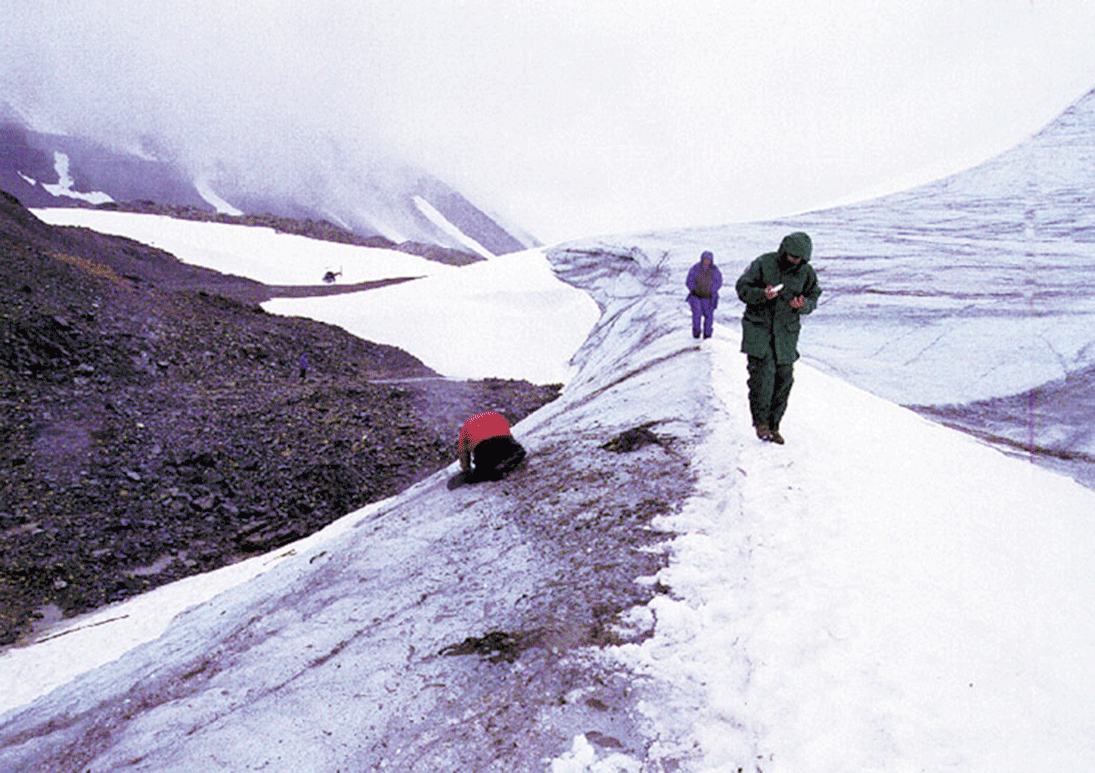Delegates hear of ice man’s final journey
Continuing research into a 500-year-old body of an ice man found in August 1999 in northern B.C. has reached some conclusions about his journey and final days.
By Whitehorse Star on June 17, 2005
Continuing research into a 500-year-old body of an ice man found in August 1999 in northern B.C. has reached some conclusions about his journey and final days.
The findings were presented today at the Rapid Landscape Change science conference occurring at Yukon College this week.
The B.C. ice man, or Kwaday Dan Ts’inchi, as he came to be known, was found in the northwest corner of B.C. in a melting glacier in the Tatshenshini-Alsek Park. Kwaday Dan Ts’inchi means the long-ago person found.
The body is the first and best preserved ancient person ever found in North America.
Kwaday Dan Ts’inchi was likely between the ages of 19 and 21 when he died suddenly. No conclusions have been reached about his cause of death and there is no evidence of serious injury to his body.
Previously, studies focused on remnants of seafood found in his stomach.
However, new findings by Perta Mudie, a scientist with the Geological Survey of Canada, have examined pollens and spores from the man’s digestive system to come to conclusions about his final days.
“Like it or not, our bodies do record the food, and the events in some ways, of the last few days,” Mudie told her audience today.
Different parts of the human digestive system contain remnants of the food eaten from as little as three hours ago to almost three days earlier.
Mudie’s research suggests that Kwaday Dan Ts’inchi’s last meal consisted of beach asparagus and water, likely from a stream of an eroding glacier.
Beach asparagus is a common growth found in coast areas along the Lynn Canal. It has a juicy, but salty taste.
“It would not be unpleasant to eat, if you’re thirsty,” said Mudie.
Prior to his last meal, evidence of fat in the man’s system suggests he ate some type of meat, likely deer, said Mudie.
Two days prior to his death, there is evidence he ate salmon and some type of berries, said Mudie of his intestine contents.
Finally, looking at Kwaday Dan Ts’inchi’s colon, scientists will be able to conclude what he had eaten up to three days prior to his death.
Mudie said she is not yet entirely clear on what the pollen particles present in his colon suggest. But it does appear to be from a pollen and spores that are not usually found in the Yukon or B.C., she said.
However, so far, she has been able to conclude he was likely eating in a low elevation, coastal area, due to high salinity found in the remnants.
A lot more research into his intestinal content is needed to truly understand the last three days of his life, she said.
Beyond concluding what Kwaday Dan Ts’inchi had eaten, Mudie has been able to use the pollen and spores present in his digestive system to come to develop an idea of the possible route of his journey.
He was likely moving down the Lynn Canal, she said. He was going from coastal to alpine areas, she said, starting at the ocean, moving inland and to an elevation likely about 1,600 m higher than his starting point, before working back toward the coast again.
There are also suggestions that he spent time in pond-like, lake environments, she added.
Mudie went so far as to speculate that one of his meal stops was likely in the Klehini River basin.
She added he likely travelled approximately 100 km over the three days leading up to his death.
The pollen and other food particles, such as the salmon, are also able to give some indication of the season of death, she said.
Due to the time of year various forms of plant-life flower and pollenate and when salmon run, Mudie said, Dan Ts’inchi likely died some time between the end of July and the third week of August.
“The evidence suggests that it was a summer event,” she said. “That he was travelling in the summer.”
Despite it being a summer journey, he was trekking during the onset of the Little Ice Age, and there were very unpredictable weather conditions.
“This is why the young man was taken by surprise,” Mudie said.
It’s very possible that he simply lay down to rest, was covered in snow and died of hypothermia, she hypothesized.
The science conference, which has attracted 75 scientists from around the world, concludes today.
The participants will be taking field trips in the Kluane area over the weekend to learn more about the ways in which natural environments are changing and how human communities can adapt to the changes.
Whitehorse Star Reporter Julia Skikavich

Comments (1)
Up 9 Down 2
What great piece on Oct 6, 2017 at 2:43 pm
What great piece
Wilf Carter